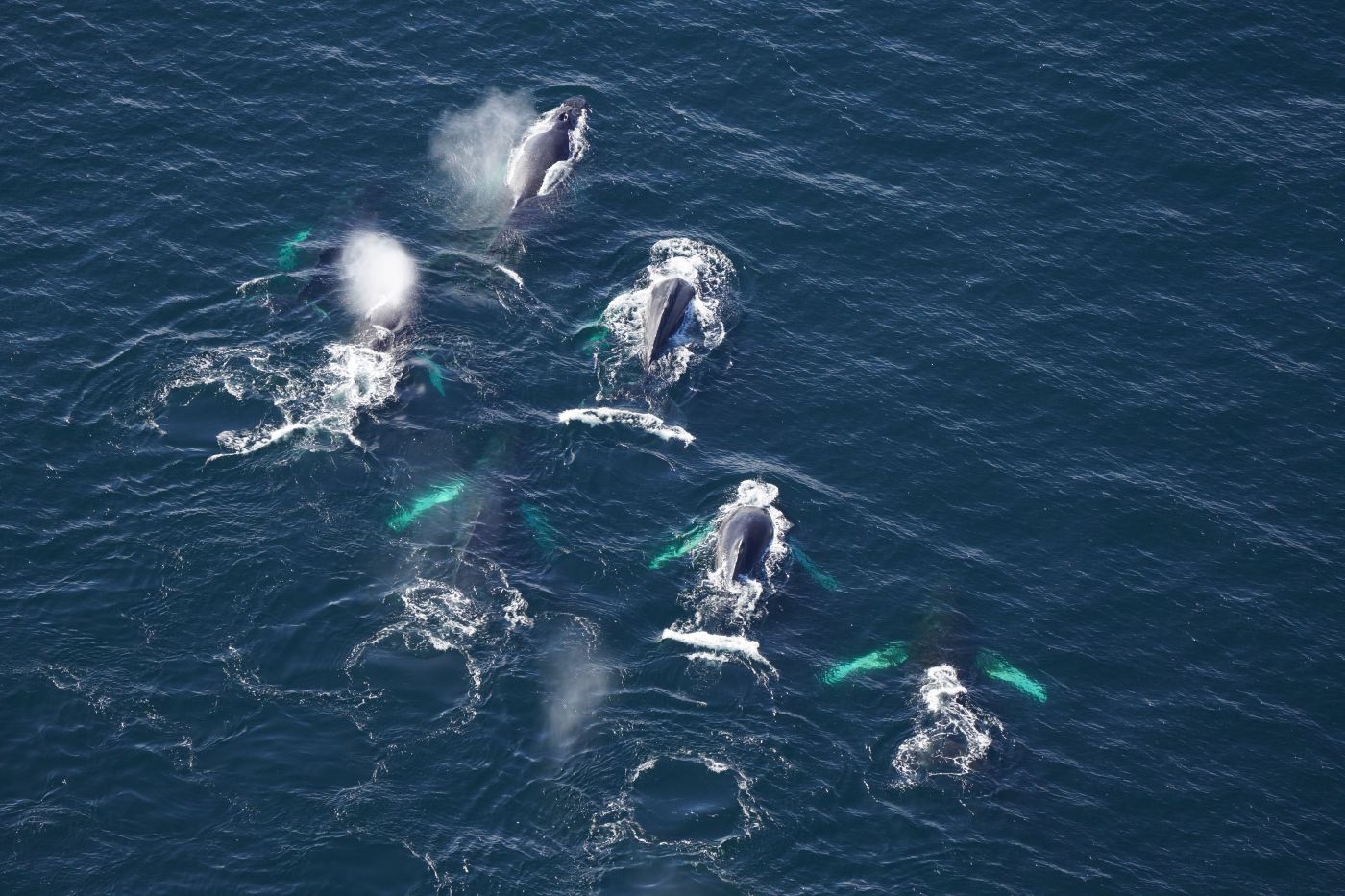
New England Aquarium researchers report lots of whale activity off Maine coast
North Atlantic right whales have been on the move along the East Coast, with recent sightings of a mother and calf feeding in the Gulf of Maine.
The New England Aquarium aerial survey team from the Anderson Cabot Center for Ocean Life has seen a high level of whale activity off the coast of Maine this fall.
Aquarium aerial observers were flying over Wilkinson Basin last week when they spotted right whale “Pediddle” and her 10-month-old calf skim feeding. The calf, first spotted in the southeastern U.S. calving grounds in January, is the ninth documented calf of Pediddle — a female that’s at least 45 years old.
A few hours later, the team saw a third right whale, “Mohawk,” about 35 miles southeast of Portland. The 49-year-old male was feeding among a group of basking sharks.
Other research groups have detected the wide-ranging presence of right whales in Gulf of Maine waters over the past month, including a second mother-calf pair and multiple acoustic detections.
“It was incredible to watch these right whales feeding at the surface, especially Pediddle’s calf learning to feed alongside its mother,” said Katherine McKenna, an assistant scientist in the New England Aquarium’s Anderson Cabot Center, who captured the aerial survey photos.
“Right whale mothers and their calves are vital to the recovery of this critically endangered species, and it is important to ensure they are protected from threats throughout their range,” McKenna added.
Related Articles
New England lobstermen threaten to sue feds over planned Massachusetts fishing closure
North Atlantic right whale population levels off, but they’re still ‘swimming along the cliff of extinction’
Decline of rare right whale appears to be slowing, but scientists say big threats remain
Warming waters in the northern Atlantic Ocean have led to shifts in right whale habitat use, making them vulnerable to human-caused threats in certain areas.
North Atlantic right whales are one of the most endangered large whale species in the world, with scientists estimating around 350 individuals remaining in the population and just 70 reproductive females.
Sightings of the critically endangered species have ranged from Newfoundland to New Jersey over the past month.
Aquarium scientists have also recorded a total of 88 humpback and 121 endangered fin whale sightings during their seven flights this fall over the Gulf of Maine, including one day with 38 fin whales observed.
The Aquarium team also saw an endangered blue whale about 25 miles south of Boothbay, Maine. Several groups have been conducting aerial surveys of Maine offshore waters this year, collecting data on marine mammal activity.
“The amount of wildlife we’ve seen feeding has really been quite astounding,” said Orla O’Brien, an associate scientist in the Anderson Cabot Center who leads the aerial survey team. “From fin whales lunge feeding on krill, to right whales and basking sharks skim feeding side by side, to groups of humpbacks, pods of dolphins, and a blue whale — all brought here by a large amount of prey in the Gulf of Maine.”
Right whale “Pediddle” and her calf foraging in Gulf of Maine waters. (New England Aquarium photo)
The Aquarium team spotted an endangered blue whale about 25 miles south of Boothbay, Maine. (New England Aquarium photo)


